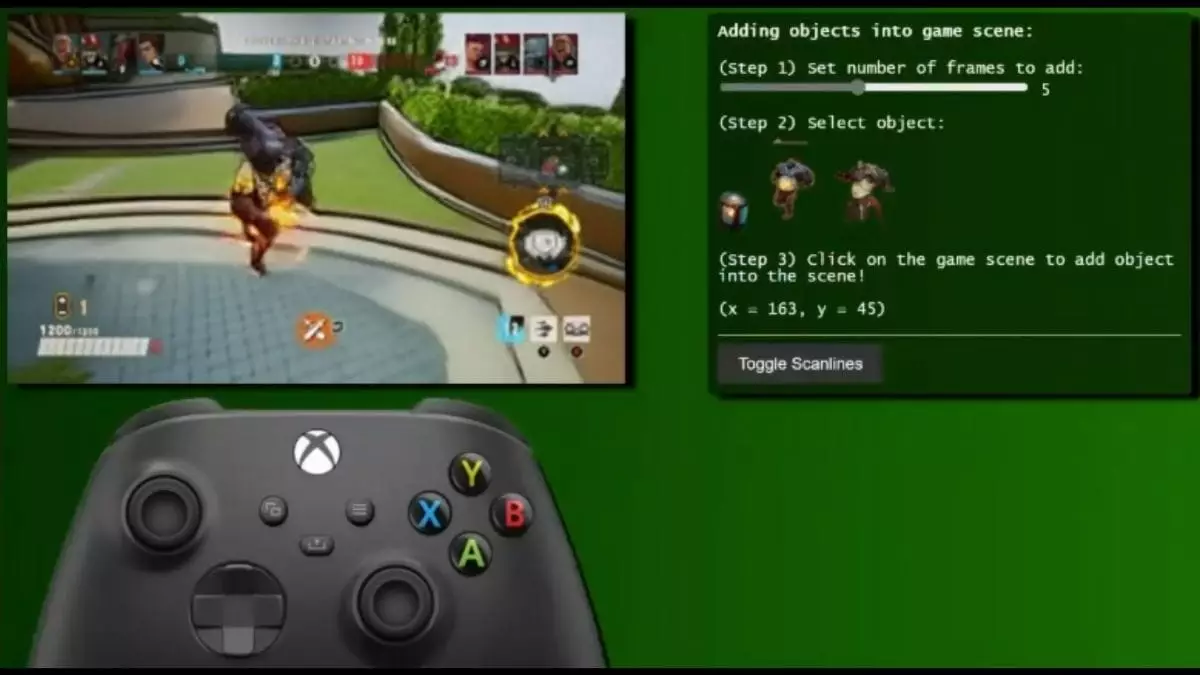Last week, Microsoft unveiled an innovative yet imperfect slice of digital entertainment—a real-time experience of the iconic 1997 game, Quake II, powered by advanced artificial intelligence. This initiative, made available through the Copilot Labs platform, presents a tantalizing glimpse into the future of gaming. With tools like the Muse AI models and the cutting-edge World and Human Action MaskGIT Model (WHAMM), Microsoft aims to not only replicate but also enhance the dynamic gameplay originally conceived over two decades ago. Despite the excitement surrounding this technological achievement, it’s crucial to scrutinize the limitations that accompany this ambitious undertaking.
Advancements and Challenges
In terms of technical prowess, the WHAMM model represents a significant leap from its predecessor, WHAM-1.6B. The improvement in processing power allows the AI to generate more than ten frames per second, offering a fluidity that previously seemed unattainable. Yet, even amidst these advancements, the gameplay experience is riddled with nuances that highlight AI’s current limitations. AI-generated environments, while capable of creating visually stimulating scenes, often manifest as approximations of reality rather than authentic representations.
For gamers keen to relive the nostalgia of Quake II, the demo promises two-minute play sessions, yet it is imperative to approach this interactive experience with tempered enthusiasm. The interactions with virtual enemies are not as seamless as one might hope. Players may find themselves engaged in combat scenarios that devolve into garbled images and disjointed mechanics, distances between the AI’s capabilities and genuine gameplay becoming glaringly evident. Here, the AI’s inability to maintain continuity, demonstrated by occasional forgetfulness about objects outside a very narrow context window, leads to a disjointed experience.
A Double-Edged Sword
The very concept of AI-enhanced gaming brings forth a dual narrative—on the one hand, exciting possibilities and, on the other, frustrating roadblocks. The potential for AI to revolutionize the gaming landscape is undeniable; it can perform intricate tasks, modify play styles in real time, and even contribute to game design. Yet, it also forces us to confront fundamental questions about the nature of artifice. If AI cannot yet reproduce the intricate, nuanced interactions that define great gameplay, are we merely placing the crowning touch upon a flawed structure?
As gaming has always strived for immersive experiences, AI must advance to a stage where it can create not merely facsimiles but rather evolve gameplay into a richer tapestry. The WHAMM-powered Quake II experience exhibits the possibilities while also serving as a testament to areas requiring further refinement. Indeed, the technology is still in a nascent stage, and while it can paint a pretty picture, it must curtail the glaring flaws in gameplay interaction.
The Human Element in an Automated World
In this whirlwind of digital experimentation, we must not forget the essence of what gaming fundamentally represents—a human experience. At its heart, gaming is about connection, challenge, and creativity, elements that artificial intelligence is still learning to navigate effectively. The attempt to automate the complexities of human interaction within games begs a larger philosophical conversation about what it means to be a player or an artist. Is gaming ultimately about the sweat and strategy an individual brings to a shared narrative, or does a machine merely supply a canvas for our collective experience?
The nagging question remains: as we venture forward with AI enhancements, will they elevate the gaming experience, or might they lead to a sterile environment, rich in appearance but void of emotional depth? Only time will tell if the gaming community will view this latest technological leap as a worthy evolution or a superficial enhancement that overlooks the core of what makes games meaningful.
Embracing AI in gaming shouldn’t entail shedding the human aspects that shape player experiences. While Quake II’s AI-driven demo is a compelling exploration of what’s possible, it also serves as a reminder that we must blend innovation with authenticity. That blend will be essential if we hope to navigate the precarious landscape of an AI-augmented future while preserving the rich tapestry of the gaming world.

Leave a Reply